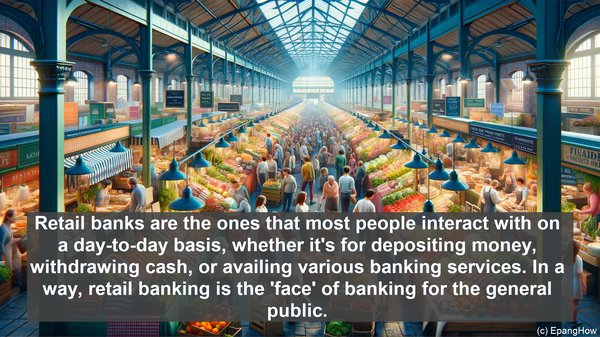Introduction: The Diverse Landscape of Banking
Hello everyone! Welcome to our article on investment banking and retail banking. When it comes to the world of finance, banking is a crucial pillar. However, it’s important to note that banking isn’t a monolithic entity. In fact, it encompasses various sectors, each with its own unique characteristics and functions. Today, we’ll be diving into the nuances of investment banking and retail banking, two prominent sectors that play a significant role in shaping the financial landscape.

Investment Banking: The Engine of Capital Markets
Let’s start with investment banking. Often considered the ‘engine’ of capital markets, investment banking primarily deals with facilitating financial transactions for corporations, institutions, and even governments. One of the key functions of investment banks is underwriting, where they help companies raise capital by issuing stocks or bonds. Additionally, investment banks also provide advisory services, assisting clients in strategic decision-making, mergers and acquisitions, and other complex financial matters. It’s worth noting that investment banking is largely a B2B (business-to-business) domain, with its clients being primarily large organizations.
Retail Banking: The Face of Banking for Individuals
On the other hand, we have retail banking, which is often referred to as ‘consumer banking’ or ‘personal banking.’ Unlike investment banking, retail banking focuses on serving individual customers. When you think of a bank branch, with its tellers, ATMs, and services like savings accounts, mortgages, and personal loans, you’re essentially picturing the realm of retail banking. Retail banks are the ones that most people interact with on a day-to-day basis, whether it’s for depositing money, withdrawing cash, or availing various banking services. In a way, retail banking is the ‘face’ of banking for the general public.
Risk and Reward: Contrasting Approaches
One of the key distinctions between investment banking and retail banking lies in their risk-reward dynamics. In investment banking, due to the nature of the transactions and the clients involved, the potential rewards can be substantial. However, this also means that the risks are higher. Investment banks often deal with complex financial instruments and are exposed to market fluctuations, making their operations inherently more volatile. On the other hand, retail banking, while relatively less lucrative in terms of individual transactions, offers stability. Retail banks rely on a large customer base and a steady stream of deposits, ensuring a more predictable revenue flow.

Regulatory Framework: A Tale of Two Sectors
Another aspect where investment banking and retail banking differ is the regulatory framework they operate under. Retail banking, given its direct interaction with individual customers and their finances, is subject to stringent regulations, aimed at ensuring consumer protection and maintaining the stability of the banking system. Investment banking, while also regulated, has a different set of rules, often focused on market transparency, preventing insider trading, and maintaining the overall integrity of the financial markets. The regulatory landscape for investment banking is typically more complex, given the intricate nature of the transactions involved.
Economic Impact: The Ripple Effect
Both investment banking and retail banking have a significant impact on the overall economy. Investment banking, with its role in facilitating capital raising and corporate transactions, is often seen as a driver of economic growth. By helping companies access funding, investment banks enable them to expand operations, invest in research and development, and create job opportunities. Retail banking, on the other hand, has a more direct impact on individuals and households. By providing access to financial services, retail banks empower consumers to make purchases, invest, and plan for the future, thereby contributing to economic activity at the grassroots level.
